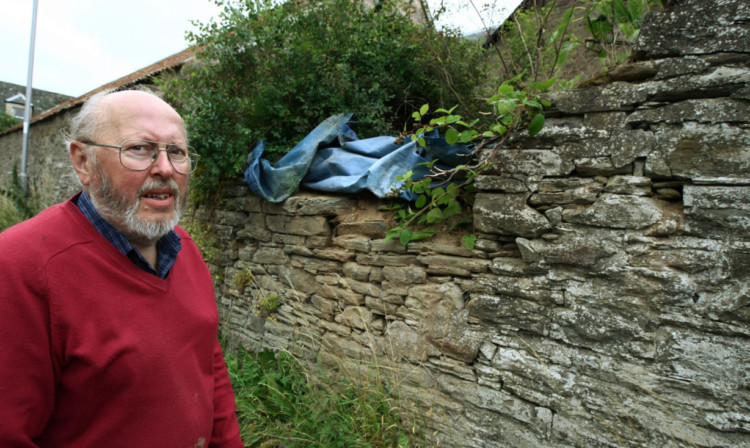A Liff man has won a five-year battle for the repair of his centuries-old drystone wall after it was damaged by roadworks outside his house.
Ian Glenn’s claim for more than £17,000 in compensation from Angus Council and Tayside Contracts went all the way to the Court of Session.
He took the two public bodies to Forfar Sheriff Court after the incident in 2009, and Sheriff Derek O’Carroll ruled that they should pay him the sum for rebuilding the structure on the west side of his garden on Church Road.
The sheriff said the council should have carried out a proper survey of the wall before allowing the public works organisation to upgrade the rural thoroughfare outside his home.
The council appealed the ruling and the case went to the Court of Session, where the local authority contended that the sheriff had erred in law.
They said the sheriff noted that the council ought to have put precautionary measures in place, but he did not specify the measures.
Evidence was heard that any possible precautionary measures would have been impractical or unreasonable, and they said this ignored a relevant consideration.
The case was progressing towards a hearing, a stage that would have entailed high costs for both parties by appointing counsel to represent them at the Court of Session.
Angus Council has now decided to take the matter no further, however.
A spokesman said: “The council’s insurers have advised us that they won’t be continuing with the appeal.”
Mr Glenn’s eight-foot wall was built between 250 and 300 years ago. It is about 90 feet long and two feet deep, but had shallow foundations.
The repeated banging of a JCB digger caused vibrations to be transmitted along the road, up through the foundations and into the wall, causing the collapse.
